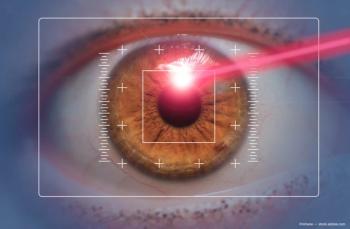
Canadian MDL granted for dry eye test
The maker of an in-office test (InflammaDry Detector, Rapid Pathogen Screening) to detect elevated levels of matrix metalloproteinase-9 (MMP?9) in tear fluid expects to begin marketing it in Canada soon now that the company has been granted a medical device license from Health Canada. The product was also recently released in Europe and Asia.
Sarasota, FL-The maker of an in-office test (InflammaDry Detector, Rapid Pathogen Screening) to detect elevated levels of matrix metalloproteinase-9 (MMP‐9) in tear fluid expects to begin marketing it in Canada soon now that the company has been granted a medical device license (MDL) from Health Canada. The product was also recently released in Europe and Asia.
MMP-9 is an inflammatory marker that has been shown to be elevated in the tears of patients with dry eye disease. Elevated levels of MMP-9 correlate with clinical exam findings, and research shows that MMP‐9 may be a more sensitive marker than clinical signs when diagnosing dry eye, according to the company. In addition, studies have demonstrated that the diagnosis and treatment of elevated levels of MMP-9 before LASIK surgery may result in improved wound healing and reduced complications, according to the company.
The in-office test has a clinical sensitivity of 85% and a specificity of 94%. Using a small sample of human tears, it can provide results in 10 minutes, allowing clinicians to make a diagnosis and treatment decision during an initial office visit.
“Providing clinicians with a rapid and accurate in-office screening test to detect hidden dry eye disease will help identify patients that may benefit from perioperative therapy to improve their ocular surface, leading to better surgical and medical patient outcomes,” said Robert Sambursky, MD, president and chief medical officer of Rapid Pathogen Screening.
Newsletter
Don’t miss out—get Ophthalmology Times updates on the latest clinical advancements and expert interviews, straight to your inbox.















































.png)


